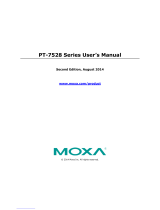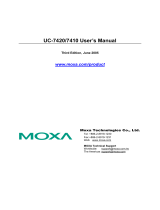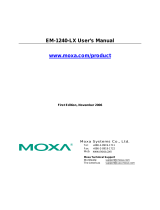
Table of Contents
1. About This Manual ............................................................................................................................. 1-1
2. Understanding the Command Line Interface ..................................................................................... 2-1
Accessing the Switch ........................................................................................................................... 2-2
Logging in using the RS-232 Console ............................................................................................. 2-2
Logging in using Telnet ................................................................................................................ 2-5
Command Modes ................................................................................................................................ 2-7
Basic Configuration ...................................................................................................................... 2-7
Understanding All Command Modes ............................................................................................... 2-7
Help Messages ................................................................................................................................... 2-8
Special Usage and Limitations .............................................................................................................. 2-8
Abbreviated Commands ....................................................................................................................... 2-9
No and Default Forms of Commands ................................................................................................... 2-11
CLI Error Messages ........................................................................................................................... 2-11
Command History ............................................................................................................................. 2-13
3. Commands ........................................................................................................................................ 3-1
System .............................................................................................................................................. 3-2
System Management ................................................................................................................... 3-2
Account Management................................................................................................................... 3-6
Network ..................................................................................................................................... 3-9
Time ........................................................................................................................................ 3-20
Port ................................................................................................................................................ 3-28
Port Interface ........................................................................................................................... 3-28
Link Aggregation ....................................................................................................................... 3-36
PoE ......................................................................................................................................... 3-41
Layer 2 Switching ............................................................................................................................. 3-52
VLAN ....................................................................................................................................... 3-52
MAC ........................................................................................................................................ 3-68
QoS ......................................................................................................................................... 3-70
Multicast .................................................................................................................................. 3-86
Network Redundancy ........................................................................................................................ 3-99
Layer 2 Redundancy .................................................................................................................. 3-99
Management .................................................................................................................................. 3-118
Network Management .............................................................................................................. 3-118
Security ......................................................................................................................................... 3-130
Device Security ....................................................................................................................... 3-130
Network Security ..................................................................................................................... 3-139
Authentication ........................................................................................................................ 3-153
Diagnostics .................................................................................................................................... 3-155
System Status ........................................................................................................................ 3-155
Event Notification .................................................................................................................... 3-158
Diagnosis ............................................................................................................................... 3-169
Maintenance and Tool .............................................................................................................. 3-188























